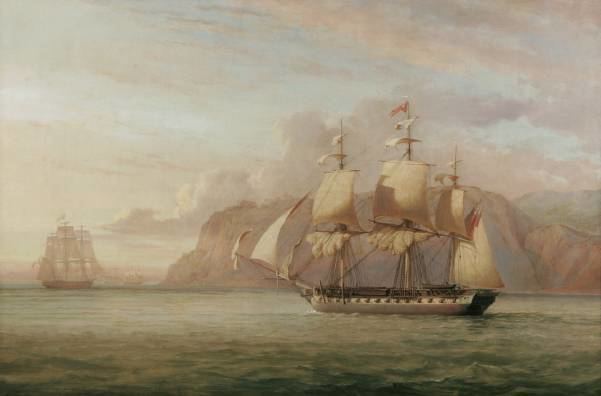Name Hébé Laid down December 1781 Launched 25 June 1782 Weight 700 tons Draft 5.5 m | Commissioned August 1782 Construction started December 1781 Length 46 m Displacement 700,000 kg Builder Saint-Malo | |
 | ||
Fate Captured by the Royal Navy in the Action of 4 September 1782 | ||
Hébé was a 38-gun of the French Navy, lead ship of the Hébé-class frigate.
Contents
French Navy career
Soon after her commissioning under Captain de Vigny, Hébé was tasked to escort a convoy from Saint Malo to Brest and protect shipping from the depredations of the British Royal Navy in the context of the Anglo-French War.
On 3 September 1782, she was chased by the frigate HMS Rainbow, whose 32-pounder chase guns shot away her wheel, allowing the British to catch on and leading to the Action of 4 September 1782. In the ensuing battle, Rainbow devastated Hébé at close range with her newly introduced carronades. Sustaining severe damage and losses among his crew, Vigny, mistaking Rainbow for a disguised ship of the line and his collapsed foremast preventing him from manoeuvering effectively, struck his colours.
British Royal Navy career
The Royal Navy took Hébé was into service first as HMS Hebe.
On 3 July 1795 Melampus and Hebe intercepted a convoy of 13 vessels off St Malo. Melampus captured an armed brig and Hebe captured six merchant vessels: Maria Louisa, Abeille. Bon Foi, Patrouille, Eleonore, and Pecheur. The brig of war was armed with four 24-pounders and had a crew of 60 men. Later she was identified as the 4-gun Vésuve. The convoy had been on its way from Île-de-Bréhat to Brest. Seaflower, Daphne and the cutter Sprightly shared in the prize and head money. The Royal Navy took Vésuve into service as HMS Vesuve.
On 24 December 1805, the Navy renamed Hebe HMS Blonde.
On 15 August 1807, Blonde, Captain Volant Vashon Ballard, captured Dame Villaret after a chase of 13 hours. She was armed with an 18-pounder gun and four 9-pounder carronades, and had a crew of 69 men. She had been out twenty days but had taken no prizes.
Fate
The Royal Navy paid off Blonde in July 1810. She was eventually broken up at Deptford in June 1811.
